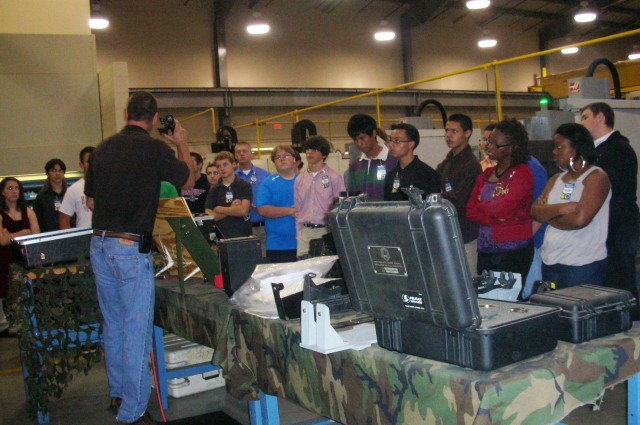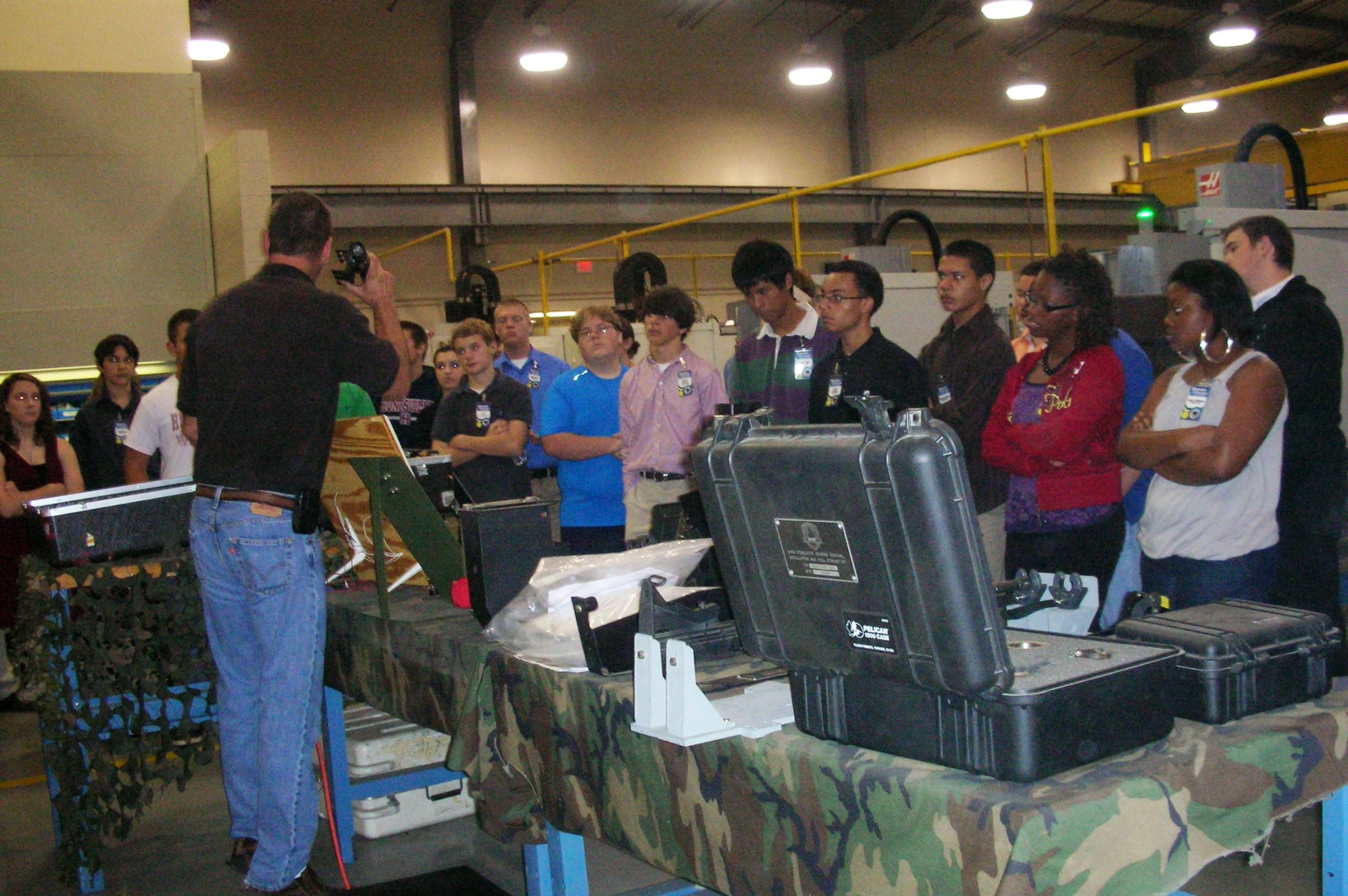Students from both public and private schools participating in the ninth annual Adventures in Engineering Day were brought by the busload Sept. 30 to tour the Prototype Integration Facility.
Some of the attending high schools were Huntsville, Madison, Madison County, Limestone County and Arab.
The AIE program allows students the chance to meet engineers who work on Redstone and to learn about their jobs firsthand. The Prototype Integration Facility welcomed the students and offered them the opportunity to see it and to speak with project leads.
Once they reached the facility, the students were taken on a tour by government project lead TJ Lapointe who was eager to show and explain what he and other members of the PIF work force do.
The bus with students from Bob Jones High was the first to arrive. The students piled in to the Visualization Laboratory where they squeezed between one another to get a better look at the large screens that gave examples of the 3D presentations being created there.
Students raised their hands and asked about the software being used, video production, and what sorts of functions these programs served.
"You can sit in a cockpit and keep fresh on where everything is in the aircraft without ever sitting in a helicopter," explained project lead Dewayne Ricketts.
"We prepare these sorts of things because we know it connects with young people," Lapointe said. "It's not the old-timer's like me doing the work on helicopters anymore. We want to create something that really translates the information to your generation."
After finishing in the Viz Lab and looking through the windows of the Soldering Lab, Lapointe escorted the group of teenagers into the Low-Bay for a look at the machine shop. The group first encountered a very bright and flashing lamp checkpoint that their guide had turned on for dramatic effect.
"Soldiers use these in the field when they aren't sure if vehicles they're encountering are friend or foe," explained Lapointe as he lifted the light to better show it to the students. "Instead of shooting and risking injury to a friend or an innocent person, they use these lights to momentarily slow the other person down until they know what they're dealing with."
Lapointe showed them several other tools and equipment that the facility had rapidly designed, developed, tested and sent to their ultimate customer -- the Soldier.
"We owe it to the Soldiers to provide them with the best equipment possible," Lapointe said. "Even simple jobs can be high-impact. Things don't have to be complicated to make a difference or save lives."
Lapointe also spoke about how the facility work force creates specialized teams for projects.
"It's about working together as a group to get the job done right; to get it done perfect," he emphasized. "You depend on one another's strengths, you ask for help when you need it, and you don't shy away from a challenge."
Some of the missile and aviation projects the students saw in the High-Bay were the Unmanned Aircraft System Shadow 200 Communications Relay System, the OH-58D Cockpit Upgrade Program, and the Surfaced-Launched Advanced Medium Range Air-to-Air Missile, better known as SLAMRAAM.
"We're building the state-of-the-art equipment that helps bring Soldiers home," Lapointe said as the group came to the end of the tour. "There's something wonderful about that."
As the group filed back into their bus, Troy Trulock, from the Air Space and Missile Defense Association board of directors, paused to shake hands with and thank Lapointe.
"This was definitely a worthwhile thing," Trulock said. "Thank you so much for this opportunity."


Social Sharing